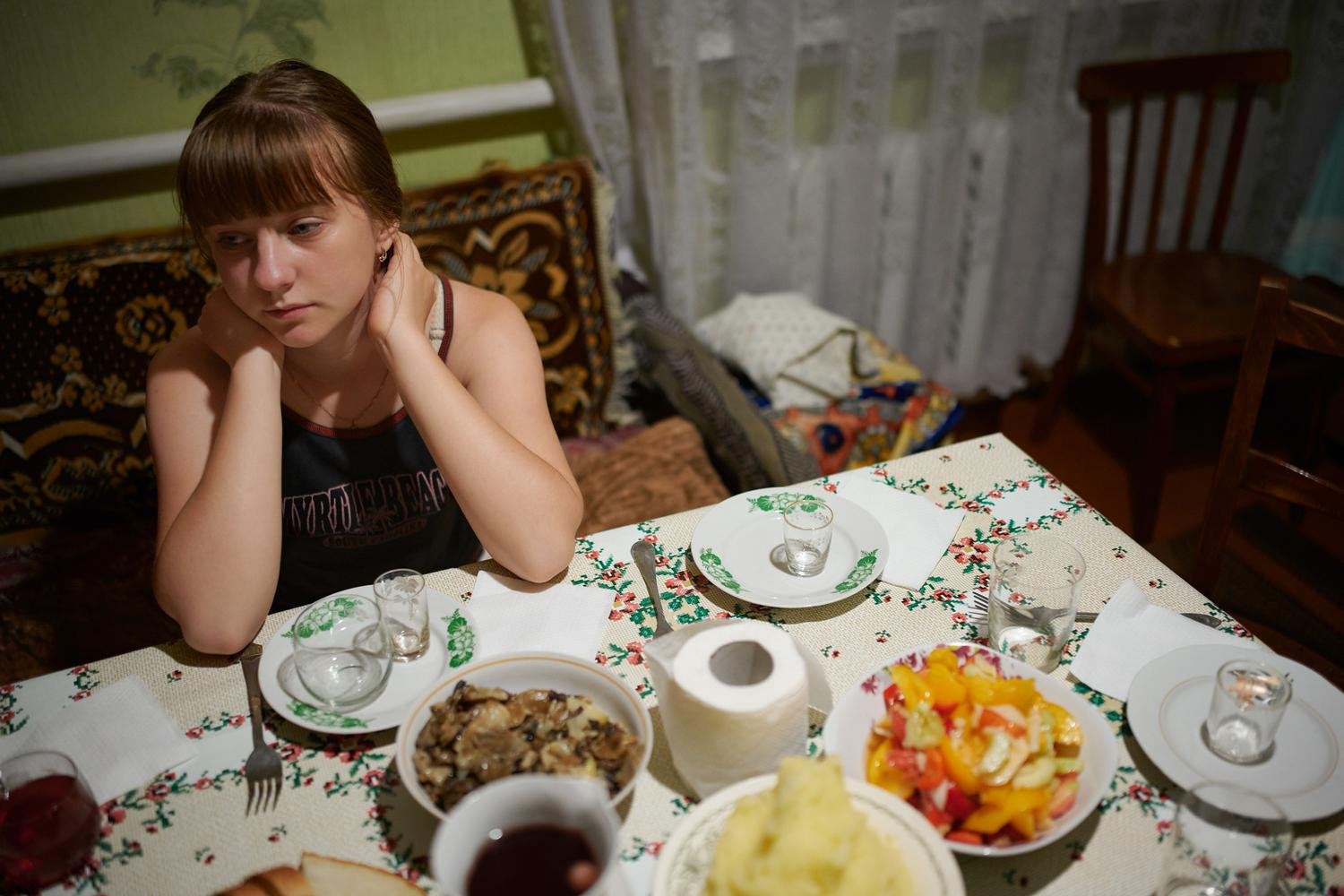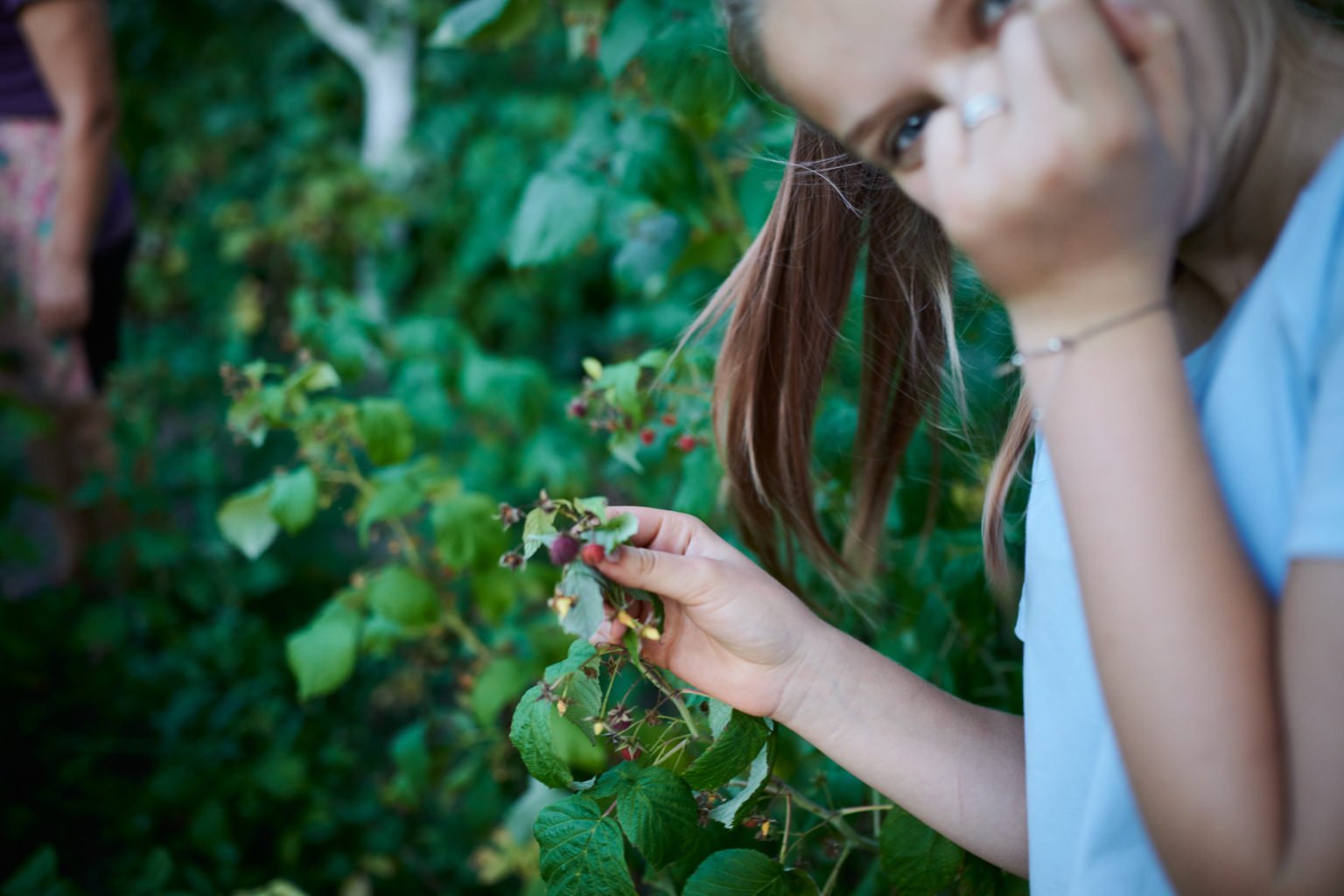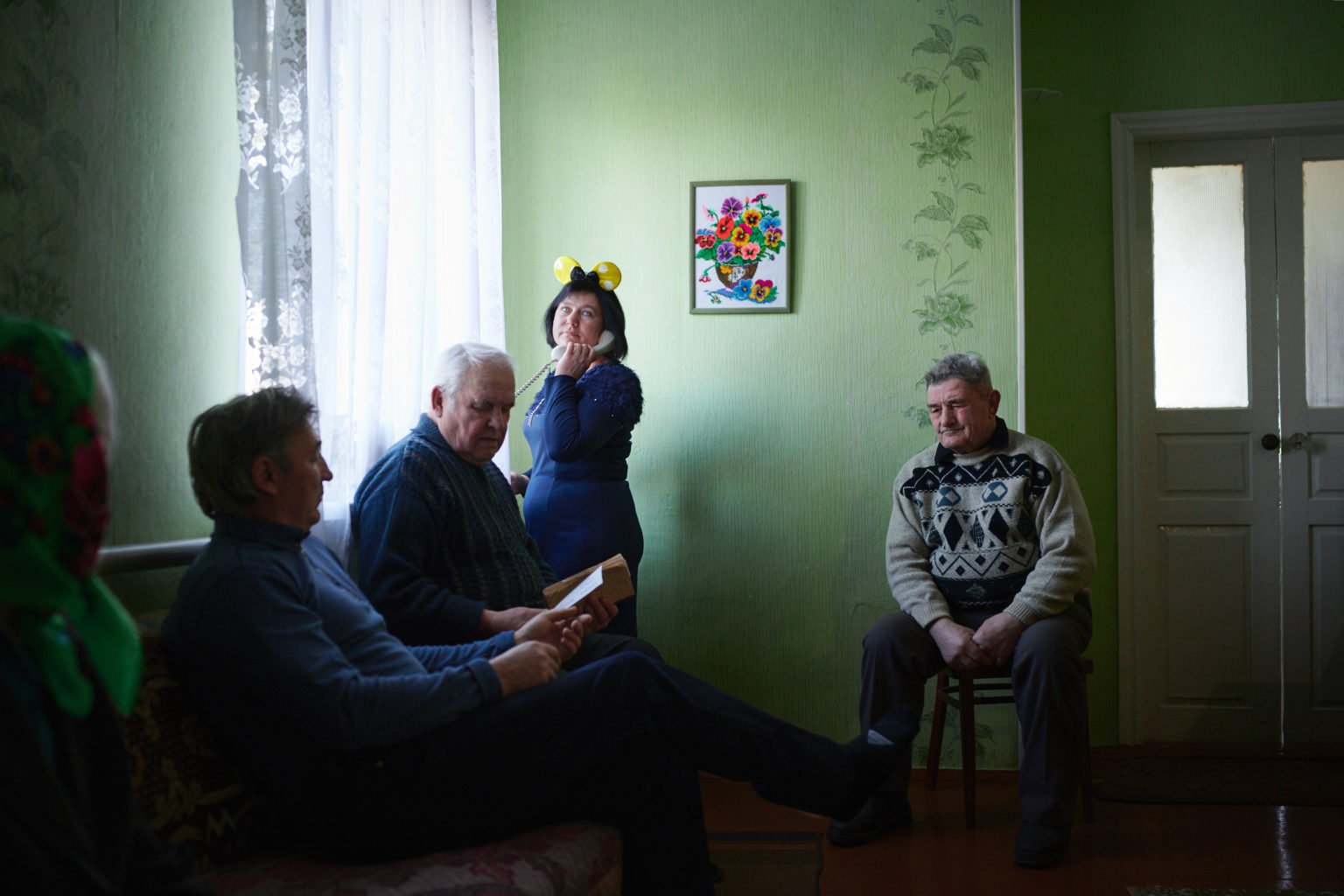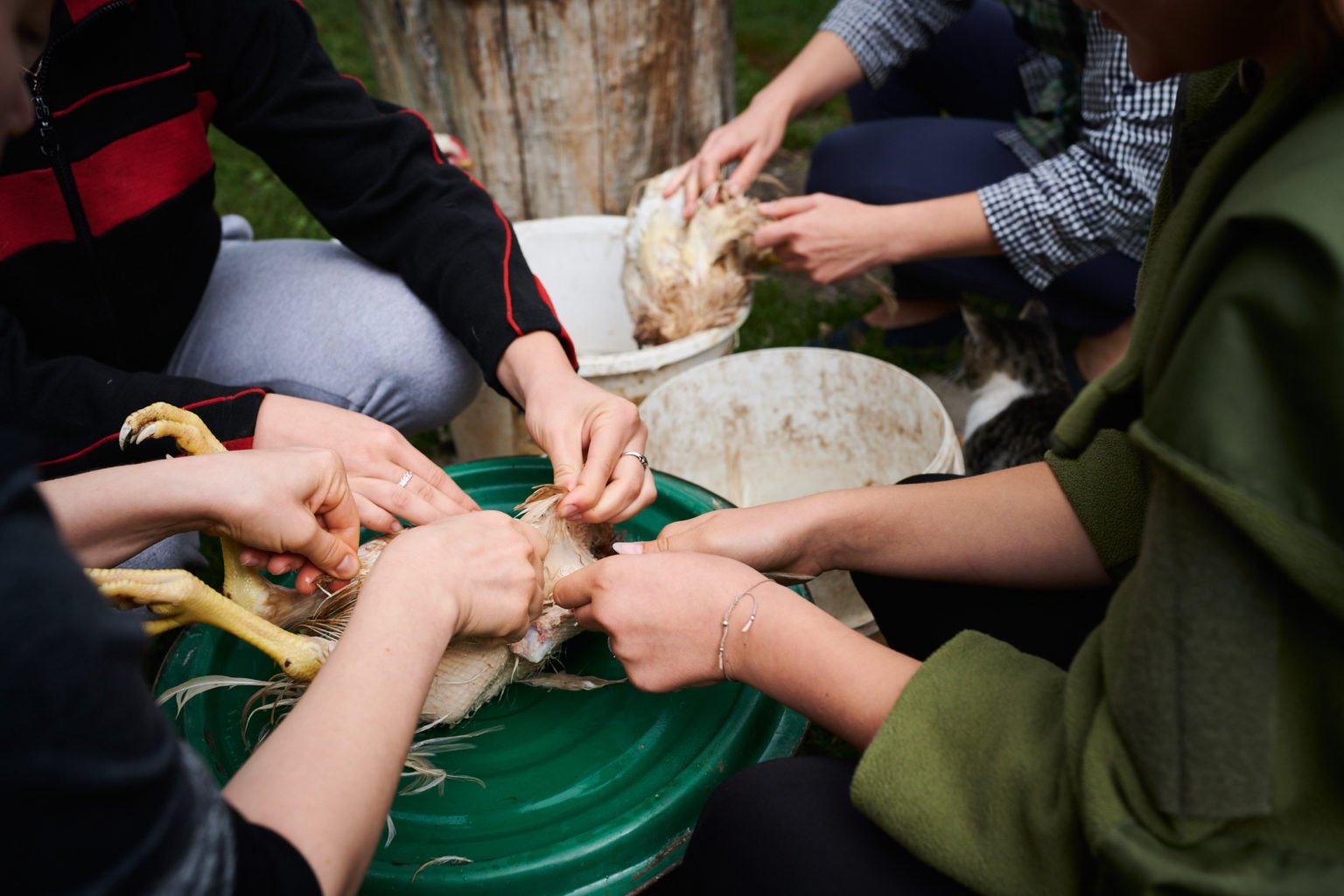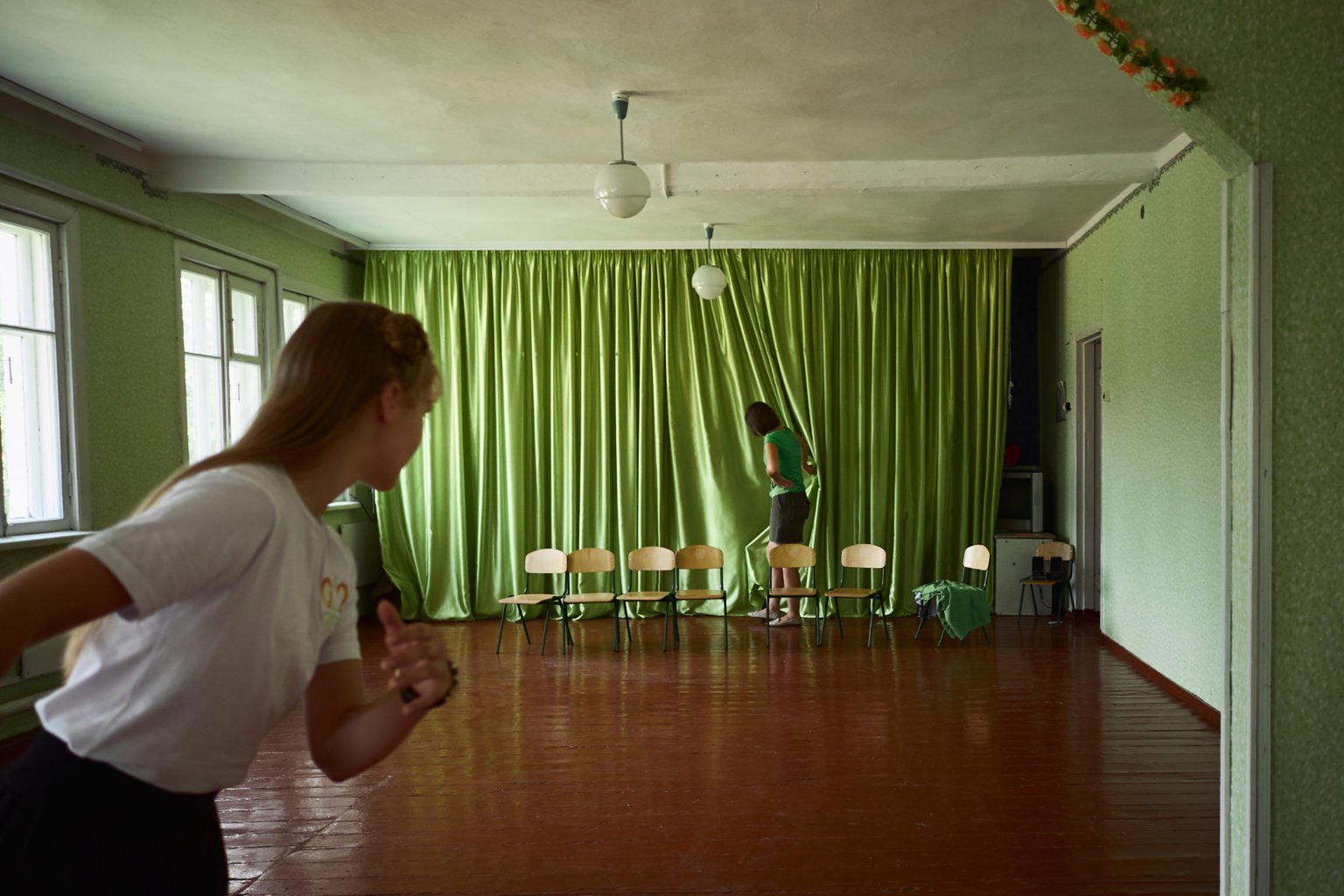What does it mean to grow what you eat—and how can our connection with the land influence our relationships with one another?
In 2018, I began documenting the daily life of a family living off the land in Heisykha, a tiny agrarian village in central Ukraine. Though they live much as their ancestors did hundreds (if not thousands) of years ago, we can all see aspects of ourselves in this single Ukrainian family. Their household is one filled with love, chores, and the occasional conflict. The father, a veteran of the ongoing war in Luhansk and Donetsk, works as a handyman. The mother is the head teacher at the village school. Their two teenage daughters enjoy dancing and secrets and Instagram. And yet, beyond the common roles and technologies that we now associate with everyday life, their family also embodies the spirit of who many of us used to be.
Photographing in Heisykha is to continually encounter a way of life that is simultaneously new to me, familiar to us all, and increasingly precarious for those who live it. The family is deeply—and inextricably—rooted in their connection to the earth. Every household in the village grows and raises their own food. In summer, the trees produce more fruit than people or their animals can eat, even when made into preserves and stockpiled in the cellars. Families welcome each new season with small altars and communal celebrations. Calendars burst with designated days to celebrate individual plants, such as The Day of the Poppy, a quiet observance that persists despite it being technically illegal to grow poppies in Ukraine due to a national effort to combat drug trafficking. Even internationally recognized holidays are grounded and embellished by nature-oriented customs. New Year’s, for example, isn’t complete without village children coming into your home in the wee hours of the morning to wake you up by loudly intoning well-wishes and tossing wheat kernels all over your floor as a gesture to bring you good harvests in the coming season.
To date, neither communism, capitalism, nor Christianity could fully displace or disenchant nature’s central importance in Ukrainian culture. Today however, many aspects of village life in Ukraine that have thrived for centuries are increasingly threatened by new and unprecedented changes. Like in other villages throughout the country, prolonged economic instability is forcing young adults to leave Heisykha to find work in cities or even abroad. This newfound diaspora is making it more difficult for communities to pass down the knowledge, skills, and customs that have been central to Ukrainian culture for generations.
How village families farm and feed themselves is also evolving. As is the case around the world, agriculture throughout Ukraine is undergoing rapid industrialization. With government policies placing a heavy emphasis on productivity and financial gains in agriculture, many small farms are being increasingly displaced and consolidated into large monocropping operations. In the region surrounding Heisykha, these environmental changes are revealing a constellation of villages scattered across an otherwise monoculture landscape.
Beyond the immediate socio-economic and political challenges, the family is also experiencing the tangible impacts of climate change. In only the three years since beginning this body of work, their village has withstood unprecedented weather extremes from the record-setting heatwave in August of 2018 and the first snowless January anyone in Heisykha could remember in 2020. If these conditions continue, families worry that the soil will be less able to support the crops they rely on.
In spite of the many changes, there is an undercurrent of self-reliance and savoir-faire that remains a foundational aspect of village culture in Heisykha. It seems significant that as our collective global economic, social, and political systems buckle under the pressure of the coronavirus pandemic, people around the world are returning to the land in their own ways. Seed sales have skyrocketed as people have begun to plant their own gardens, reclaiming a forgotten knowledge and sense of empowerment that were once second nature. In that way, perhaps the unfolding story of this single Ukrainian family shows us what’s possible when we meaningfully connect to the land that supports us—and, more saliently, what’s at stake when we don’t.
